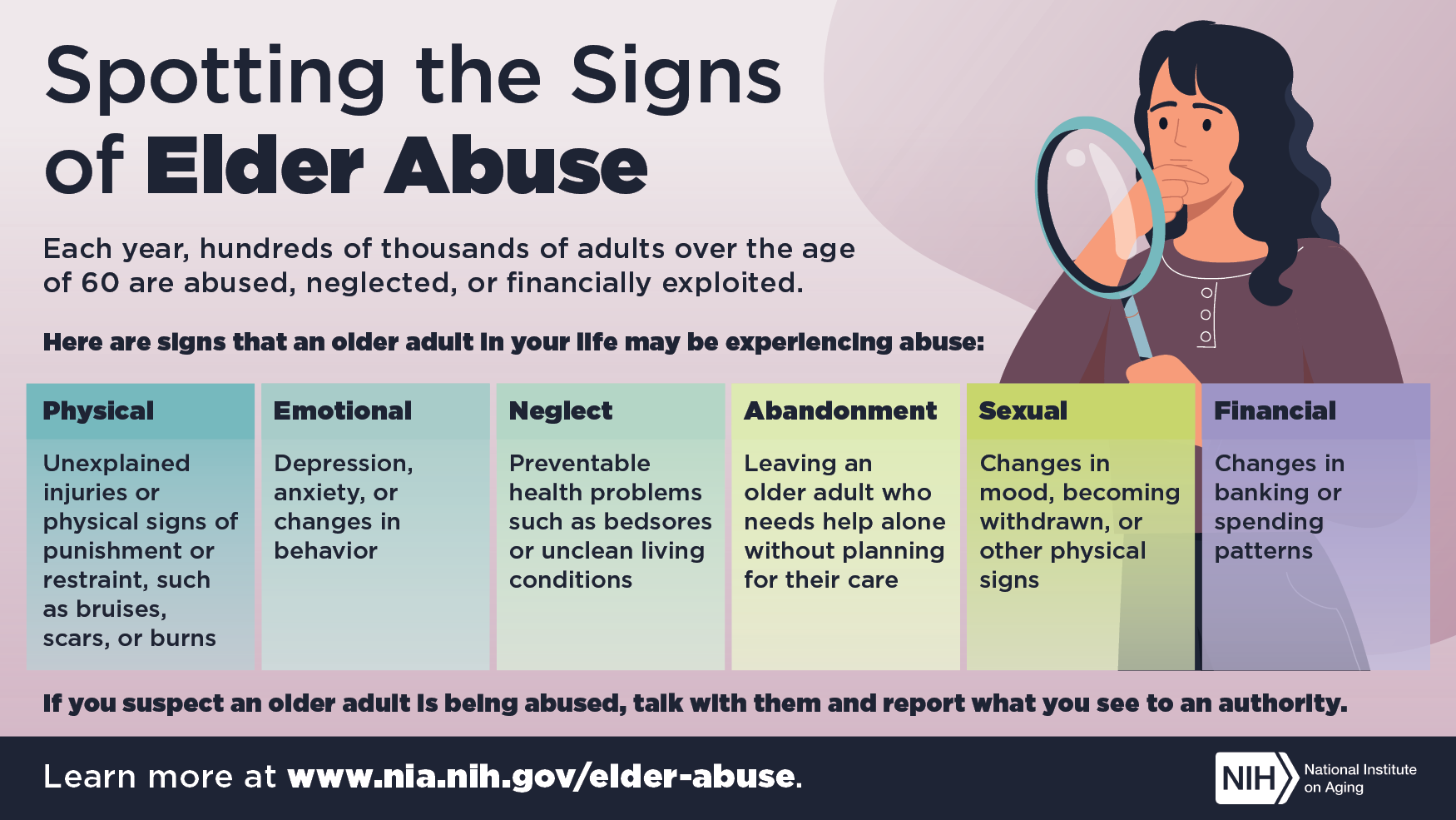Tragically, elder abuse most often happens at the hands of a loved one. There are several ways that someone might take advantage of an older adult. The Cleveland Clinic defines elder abuse as:
Elder abuse, also known as abuse of older adults, older people or abuse of a vulnerable adult, is intentionally harming a person who’s older than 60. This could be by intentionally inflicting pain (physical or emotional), neglect or financial exploitation. Abuse causes serious risk and harm.
If you or someone close to you are experiencing mistreatment, report it to the proper authorities. It’s the best way to ensure the safety of your beloved seniors.
Spotting the Signs of Elder Abuse

Key Statistics on Elder Mistreatment
The Nursing Home Abuse Center has shared these statistics regarding elder abuse on their website:
- 1 in 6 older adults (60+) experienced some form of abuse in community settings last year (WHO).
- 1 in 10 older adults living at home in the U.S. have experienced some form of abuse, including neglect and exploitation (NCEA).
- Abuse rates have risen since the COVID-19 pandemic (WHO).
- The global population of older adults is expected to double by 2050 to 2 billion, increasing the number of potential elder abuse victims (WHO).
- Psychological abuse is the most common form of elder abuse (NCEA).
- Elder abuse victims are more likely to report financial exploitation than other forms of abuse (NCEA).
- Older men are at higher risk for both nonfatal assaults and homicides compared to older women (CDC).

